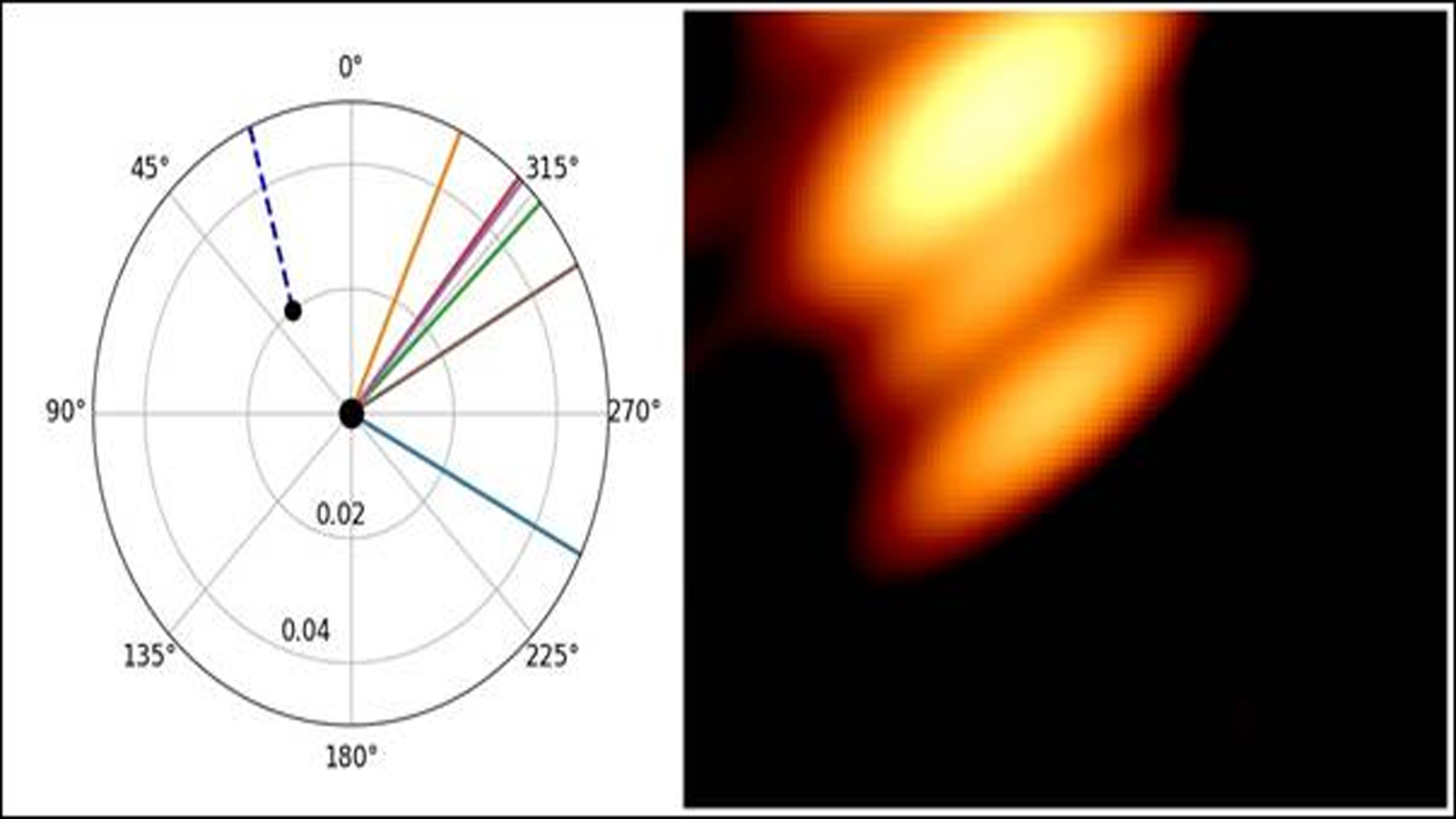In a historic breakthrough, astronomers have for the first time captured two black holes locked in orbit around each other – a cosmic dance that has long been theorized but never before seen.
The discovery, published in the Astrophysical Journal, confirms decades of predictions about the quasar OJ287, a distant galaxy powered by not one but two supermassive black holes circling each other every 12 years. The international research team included scientists Alok C. Gupta and Shubham Kishore from the Aryabhatta Research Institute of Observational Sciences (ARIES), Nainital, an autonomous institute under the Department of Science and Technology (DST), Government of India, along with Prof. A. Gopakumar from TIFR, Mumbai, and Prof. Mauri Valtonen from the University of Turku, Finland.
The findings mark a milestone in astrophysics — the first-ever radio image of a binary black hole system, revealing both black holes in unprecedented detail. The image was made possible through the RadioAstron space telescope, which orbits Earth at great distances, working in tandem with powerful ground-based observatories. Together, they achieved a resolution sharper than any telescope on Earth alone could reach.
The image revealed two distinct points of radio emission, corresponding exactly to the predicted positions of the black holes in OJ287. Even more remarkably, the smaller black hole was observed launching a jet of high-energy particles, which twists and wags like a tail as it orbits its massive companion — an effect caused by the immense gravitational forces at play.
OJ287 has fascinated astronomers for more than a century. Its rhythmic flickering, visible in archival photographs dating back to the 19th century, hinted at the presence of two orbiting black holes. The periodic behavior was first documented in 1982 and extensively studied by scientists such as Rene Hudec of the Czech Technical University in Prague.
The orbital model of the OJ287 system was established through studies published in 2018 and 2021 in leading international journals by Lankeswar Dey (TIFR), under the supervision of Prof. A. Gopakumar and Prof. Valtonen. What remained, until now, was direct visual proof of the two black holes.
That proof came through combined observations using NASA’s TESS satellite and coordinated ground-based telescopes across the world, led by Staszek Zola of Jagiellonian University, Poland. The team observed a dramatic brightening in just 12 hours — equivalent to the luminosity of hundreds of galaxies — confirming the activity of the second black hole.
“This is a major milestone in our understanding of binary black holes,” said Dr. Alok C. Gupta of ARIES. “Seeing both black holes in action provides unprecedented insight into their dynamics and paves the way for future studies on how these systems evolve and eventually merge.”
Astronomers plan to continue monitoring OJ287 to track the movement of the black holes and the evolution of the twisting jet. Although future observations will rely on Earth-based telescopes with lower resolution than RadioAstron’s, the pattern of the jet will continue to reveal how the two massive objects move and interact.
Beyond its visual impact, this discovery has profound implications for the study of gravitational waves — ripples in spacetime produced when massive objects like black holes collide. Systems such as OJ287 serve as natural laboratories for understanding these cataclysmic cosmic events.
The participation of ARIES and Indian researchers underscores India’s growing contribution to global astrophysics and the international effort to unlock the mysteries of the universe.










